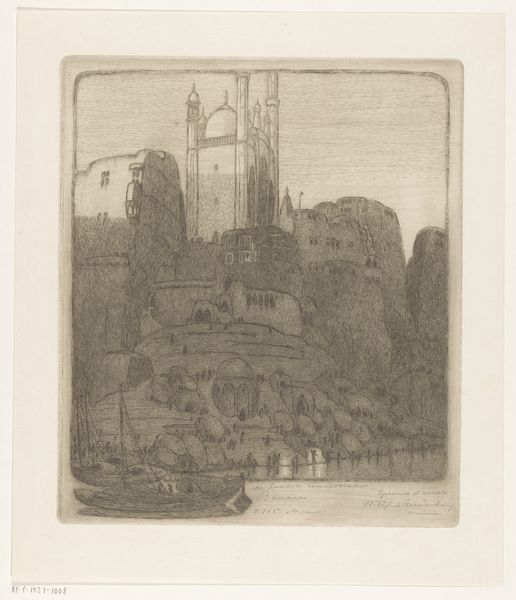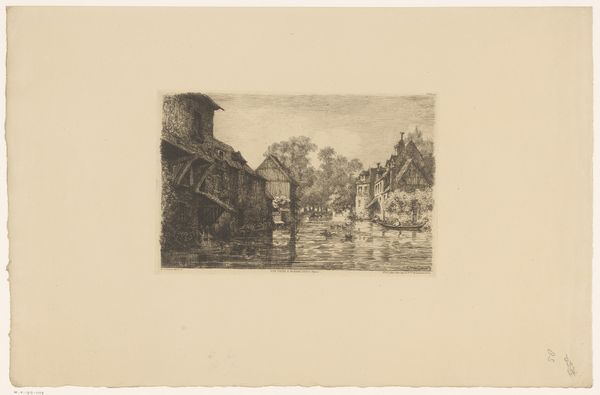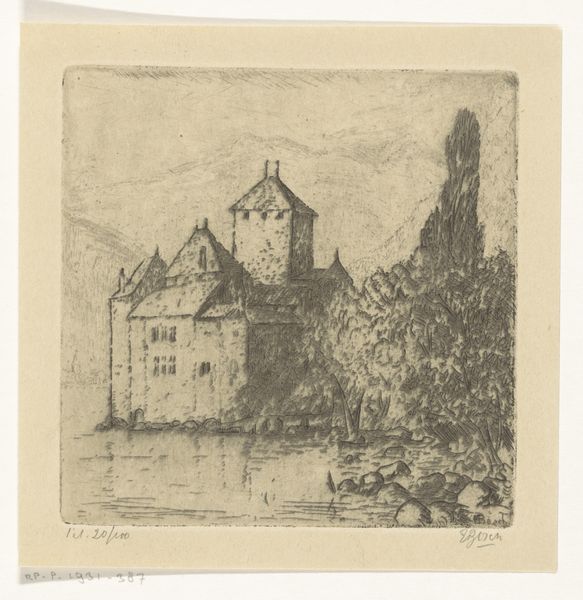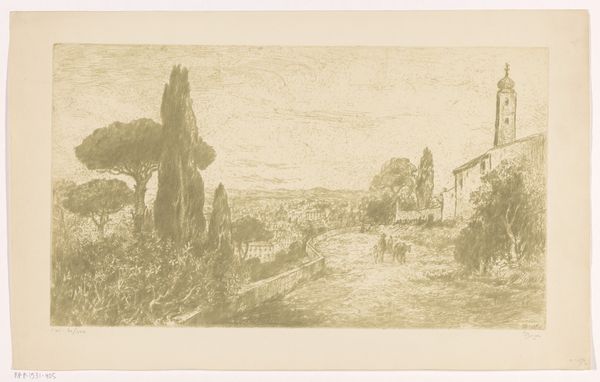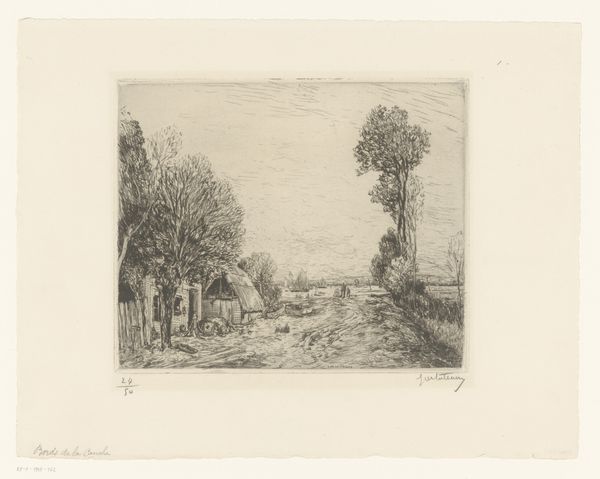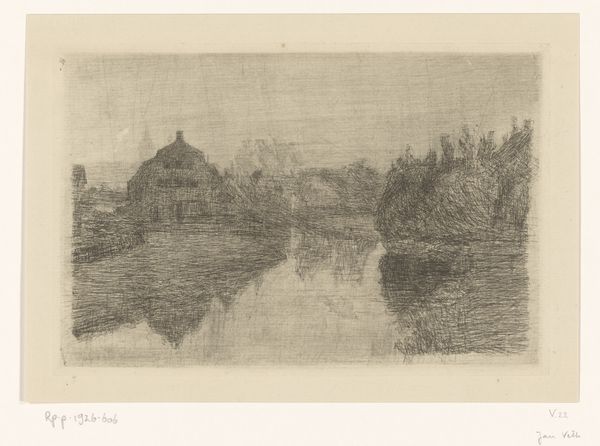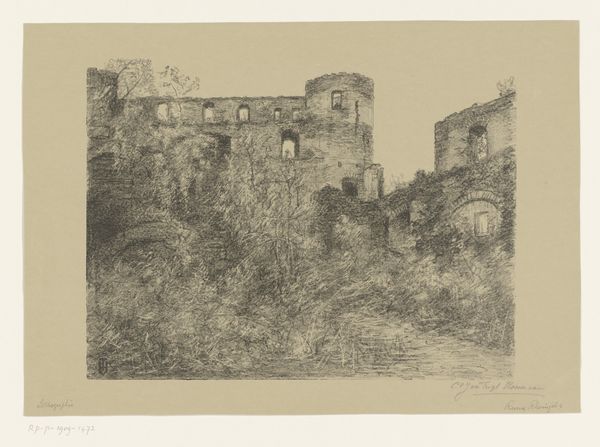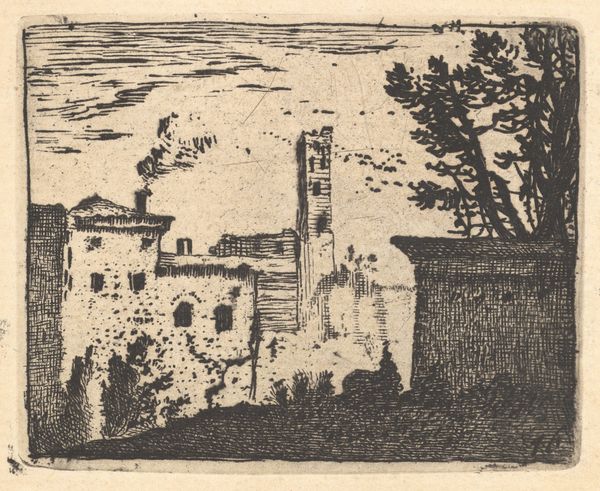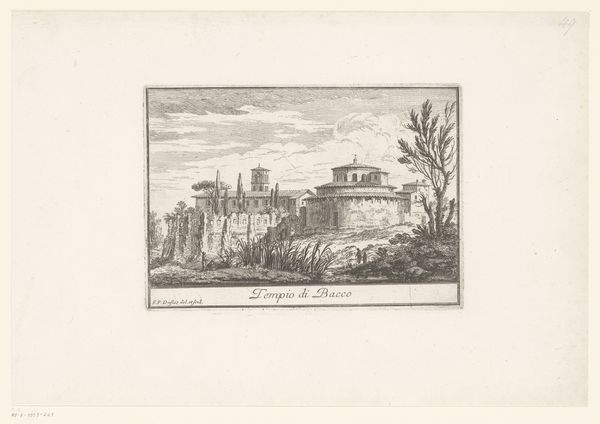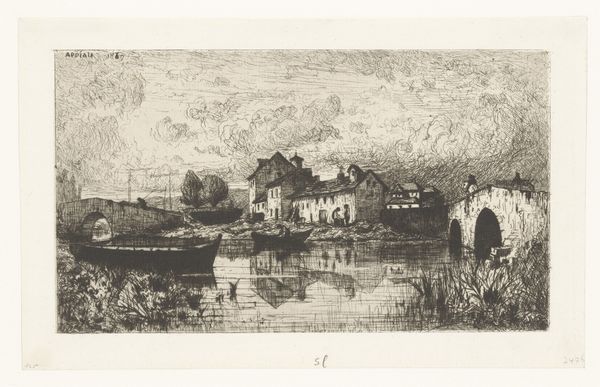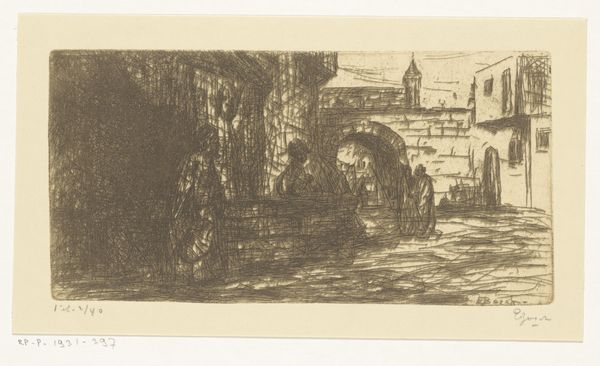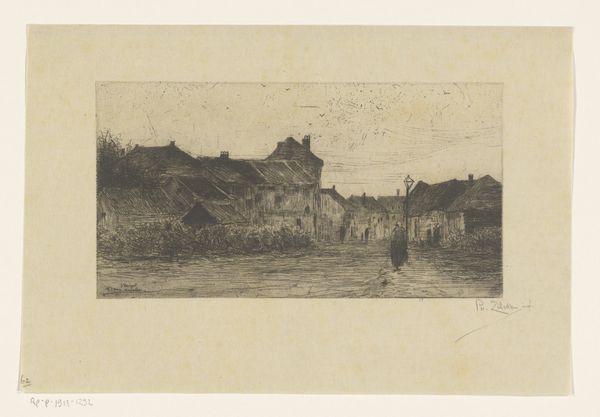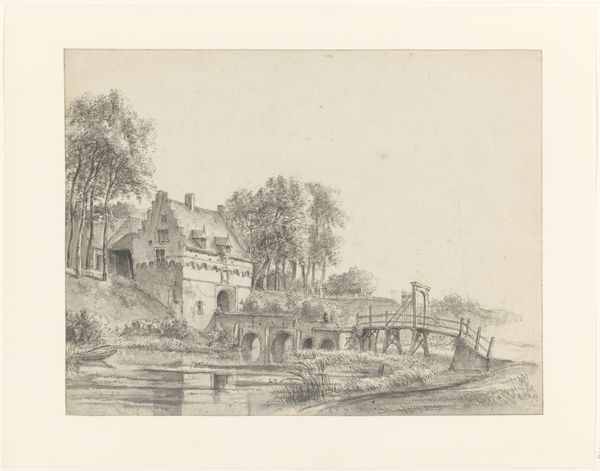
print, etching
#
16_19th-century
# print
#
etching
#
landscape
#
etching
#
watercolour illustration
#
realism
Dimensions: height 243 mm, width 355 mm
Copyright: Rijks Museum: Open Domain
Curator: As you gaze upon "Landschap bij Rome" (Landscape near Rome), made between 1873 and 1931, notice the pervasive sepia tones achieved through etching by Etienne Bosch. It offers a beautifully nostalgic view. Editor: My first thought? Tranquility. A stillness, almost. It’s not just a landscape; it feels like a captured memory. The softness of the etching…it’s incredibly soothing. Curator: Yes! Bosch masterfully employs the etching technique, achieving incredible detail despite its somewhat faded character, and note the composition's elements -- ancient walls, figures beneath the trees, which evoke the passage of time and a serene Mediterranean light. It is more than Realism; there is a feeling infused with personal interpretation. Editor: I wonder about the figures though. They're so small, almost obscured. Are they significant? Or just…there? To balance the composition, perhaps? Trees acting as symbols, linking earthly and spiritual, their presence elevates it. Curator: Precisely. It prompts reflection. The trees, as ancient symbols, whisper tales. They embody not just nature, but history. They connect to a past Rome, laden with cultural meanings and stories, anchoring the scene in both time and psyche. The etcher also added life by portraying small indistinct human activities in contrast to this quiet solemn scene. Editor: And that’s what's so fascinating about symbols, isn’t it? Their elasticity. The trees aren’t *just* trees; they are anchors, touchstones. And perhaps that indistinctness you mention actually strengthens their presence, makes them less literal and more universal. I imagine all this peace infused in these landscapes, only a symbol standing from it. Curator: An elegant idea! Bosch's piece creates a world beyond direct depiction. What could this art express if words failed? "Landschap bij Rome" asks viewers for peace in their lives despite time, or challenges surrounding us every day. Editor: Exactly. Sometimes the faintest impressions hold the most power. Curator: This understated etching resonates as a quiet hymn celebrating existence; an elegy to perseverance as it exists near the eternal city’s landscape, isn’t it? Editor: Absolutely. A subtle symphony, softly played.
Comments
No comments
Be the first to comment and join the conversation on the ultimate creative platform.
